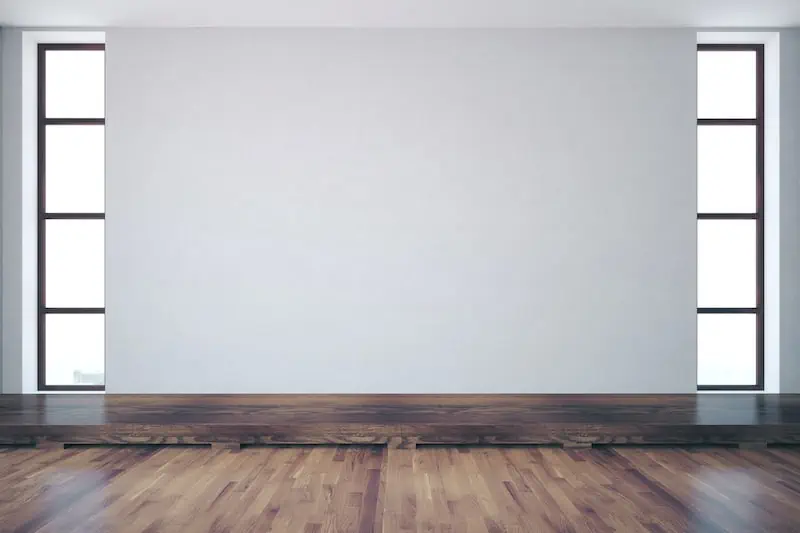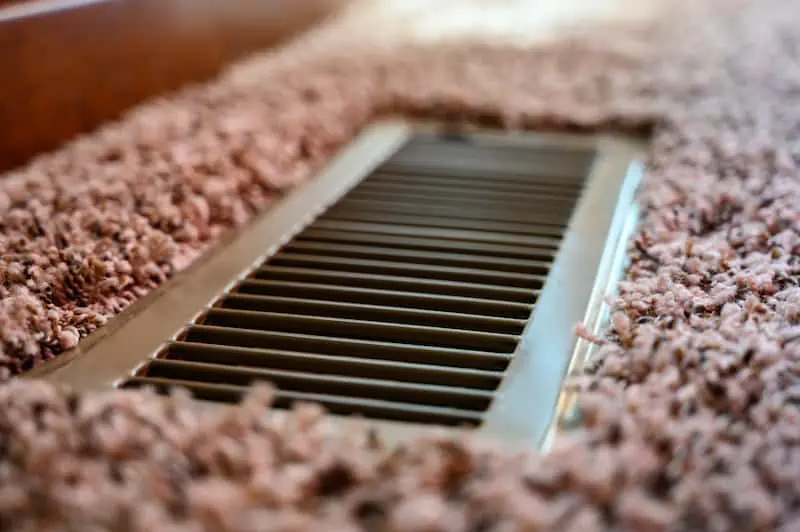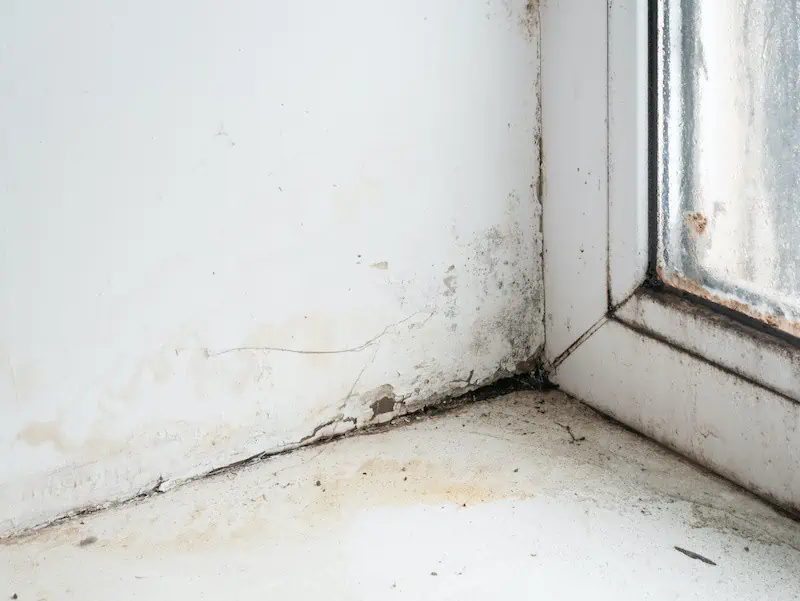How To Get Rid of Weird Smells and Odors in Your House
Posted in: I'm Moving, DIY Projects, Home ImprovementYou’re finally all moved in… no more living out of a suitcase, no more fast food (for a while anyway), and there’s not a cardboard box or shred of packing paper in sight. But wait… what’s that smell?
You might expect your new landlord or the previous owner to have completely cleaned the place before you moved in (including cigarette or pet smells). Unfortunately, that doesn’t always happen.
How do you get rid of odors? The answer involves more than opening the windows for a day.
First, Identify the Source of the Odor
Where is that smell coming from?
Wherever they may originate, the most common left behind smells come from:
- Pets
- Smoke
- Puke
- Urine
- Mold
But there’s also mildew, water damage and rot, or even animal poop and other beastly remains in the ductwork or chimney.
Before you blindly start wiping your walls with ammonia and coating your carpets in baking soda, pinpoint the source of the smell. Once you follow your nose and find it, your work is just beginning.
Why? Removing the source is one thing, but getting rid of the odors left behind is another problem.
For example, how do you remove smoke smells from things like cigarettes?
Sometimes simply airing out your place will do the trick. You can try your luck and set out bowls of citrus fruit peels and slices, or light a bunch of scented candles and crank up an air purifier. But usually, getting rid of those smells once and for all usually takes a bit more effort. Here’s what our cast of experts recommends.
How to Remove Smells in Carpeting/Curtains/Furniture
Fabrics do a super job of reeking with general smoke and pet odors. Pets (and people) will occasionally do a job on the couch or the carpet, leaving behind the faint aroma of urine or vomit. Here’s how to take care of it all.
Carpets
For carpeting, the go-to solution is baking soda (not baking powder!). Sprinkle it all over, let it sit for a few hours, and vacuum it all up. If this does it, awesome. If not, give it another go—or call a professional carpet cleaner. If you own the place and you are selling, consider getting rid of the carpet completely. The same goes if you just bought your new place and aren’t completely in love with the carpeting.
Curtains and furniture upholstery
For curtains and any removable furniture upholstery, it’s recommended to wash them in cold water with a dose of vinegar added. For upholstery you can’t toss in the washing machine, check out these nature-based nuggets of advice which don’t use any chemicals.
Leather furniture
For leather furniture, clean it with a mixture of vinegar and water on a rag, but don’t “oversaturate” the leather. In other words, go easy on the vinegar—especially in the beginning!
Spot cleaning
For spot cleaning of vomit or urine, a couple of solutions offered by the Farmer’s Almanac involve mixing cold water with vinegar or, particularly for pet urine, using a mixture of liquid soap, baking soda and hydrogen peroxide. (They also mention getting professional help for odors from mold and mildew, which we’ll cover below).
Bonus tip: Once you’ve cleaned and freshened up (and completely dried!) your curtains, throw rugs, and upholstery, keep them all wrapped up in plastic until the rest of the house is odor-free. Otherwise, you may have to clean and freshen up everything all over again. (And don’t forget to clean that odor-soaked baking soda out of your vacuum cleaner!)
Get Help Unloading Your Rental Truck
See prices for movers by the hour—instantly.
Read real customer reviews.
Easily book your help online.
How to Remove Smells in Walls/Ceilings/Floors
Surprisingly (to some), wood, paint, linoleum, and even glass can trap all kinds of undesirable odors.
Ceilings, walls, and bare floors
For hard, non-porous surfaces like ceilings, walls and bare floors, simple ammonia does a bang-up job. Just keep it away from bleach and keep your home well-ventilated (and, perhaps, your eyes protected). Also, be careful what you use it on; sealed surfaces are a no-no.
Glass
Clean glass with a mix of vinegar and warm water, rinsing it off with just water. Vinegar can also be used for walls and ceilings without having to rinse the vinegar off at the end. As with ammonia, use a bit of caution when you start wiping your walls with vinegar.
Painted walls
Painted walls (and ceilings too) can be stubborn odor-holders. All the wiping and scrubbing may not do the trick, and if the ammonia doesn’t work, it may only leave you with a nasty headache. If those smells are really embedded in there, your only option (short of burning down the house) might be painting over those stinky surfaces.
A simple paint job, however, likely won’t do the trick. Instead, you’ll want to start with a coat of oil-based or shellac-based sealant/primer. There are some professionals out there who don’t like using shellac for most projects, but it is excellent for blocking odors.
Two of the most popular odor-blockers on the market are oil-based Kilz and shellac-based Zinsser. Check out what Farmihomie has to say about several of these products if you want more granular details.
Bonus tip: Latex paint, even if touted as odor-blocking, is generally regarded as less effective than oil-based or shellac-based sealant/primer. If you are repainting over those aromatic walls, give them a coat of Kilz or Zinsser first.
How to Remove Smells in Vents/Ducts
Where air goes, so go those funky smells. If odors are trapped or are lingering in the ductwork and air vents, they could lie dormant until the weather turns and you crank up the heat or the AC, only to have the smell blow straight into your living room.
Heat or AC vents
Circulate some air through your system and sniff what comes out. If you sense something slight but suspicious, you might be able to just blow it out and let it dissipate out your open windows. Unfortunately, if it’s anything more serious than that, you may need to shell out some cash to get your air system professionally cleaned. Either way, it’s best not to wait until after you’ve got the rest of your home smelling fresh and sweet!
Also, make sure to check any and all air, AC and furnace filters to rule them out as the source, and clean or replace as needed.
How to Remove Smells in Bathroom/Basement/Dark & Spooky Corners (AKA mold)
Even if a place has never seen a cigarette or a pet, odors can still exist. A musty smell comes from the presence of mold and mildew in the damp, dark reaches of your home
Not only can these smells be in the bathroom, the basement, or the back of a closet, but you may also find them in pipes and drains. And while that smell can be unpleasant, it more importantly can also be unhealthy.
The good news about mold and mildew is if you can reach it, you can clean it.
Mildew
Mildew cleans up with the weapons already mentioned: white vinegar, ammonia, hydrogen peroxide, and warm water to name a few. Check out more extensive tips from Reader’s Digest for cleaning mildew off just about anything, including the exact measurements for cleaning materials.
Mold
Mold is a bit more of a challenge if only for the health precautions one should take, according to the CDC. Ultimately, if that musty smell is coming from your air ducts or vents, your best bet is still to call a professional cleaner.
Before You Move in, You Can Negotiate Odor-relief Inside Your Contract
Up top, we mention the possibility of a landlord or previous homeowner leaving you with a home wafting with someone else’s odors. If it happens, you now know what to do to fix it.
But the better play would be to have something in your lease or your contract stating that the home you’ll be moving into will be free of all unwanted odors. Do this, and when you are all moved in you can just put your feet up and smell nothing but the freshness of your clean new home (and maybe your socks).









